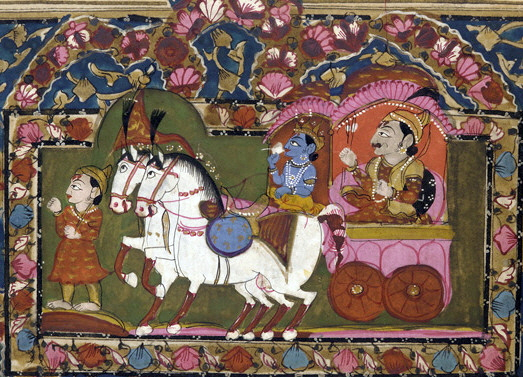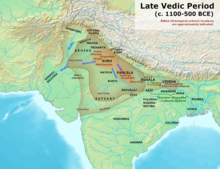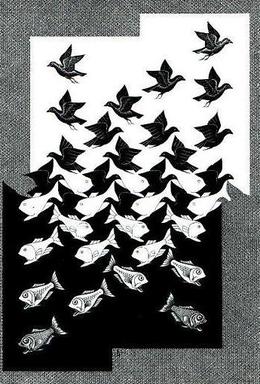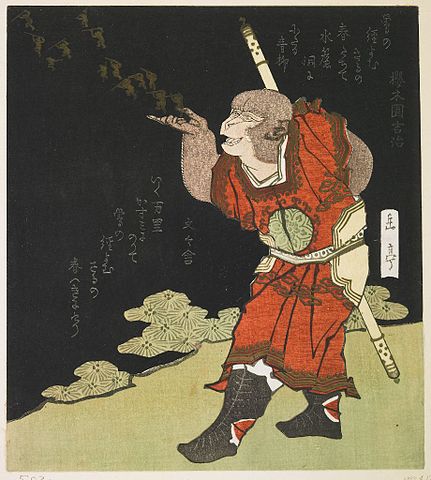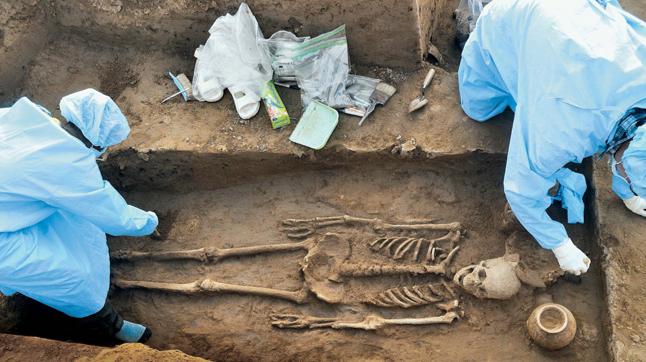Recently I read Worlds in collision and I was impressed by his theory of astrology as the religious origins. He quoted Hindu gods extensively. I wondered whether this is correct ?. The more I recollect the pictures of the current day Hindu gods, traditions and rituals the more I am convinced how correct he is and ended up in awe. Often, events, myths, religious text, religious gurus, their techniques, their benevolent/malevolent deeds are intermixed to create current day new age fascination to india.
My intention is to collect my observations .
In short, current day Hindu religion is based on 3 Primary Gods , Brahma (creator), Vishnu( protector), Shiva (destroyer) often called trinity.
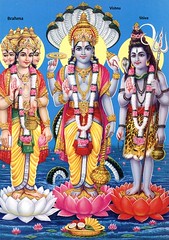
What made me wondering is the strangeness of their physical characteristics of these Gods, their offspring, Incarnations, their out of context animal vehicles and strange weapons.
Shiva.
- ONLY Snake wearing on the neck
- ONLY god with Water flows out of the head
- ONLY Hindu god with third eye
- he puts the ash on his skin.
- Wears the tiger skin
- He is big in to dance(rudra) with dance and destroys the world with
- Cow is his vehicle
- His weapon is three pronged fork called Trishul.
- He is the ONLY primary god that has godly(not normal) offspring of 2 children
o Ganesh - elephant headed god with huge tummy and rides on little small mouse
o Kumara swamy – One with peacock as vehicle.
Do you see anything strange in this descriptions ?. I never questioned this strangeness , though I heard different interpretations of these characteristics as artistic representation with inner subtle meaning (changes from source to source).
Velikovsky proposes Shiva as planet Jupiter. Without going to the depth of the his references which is extensive, simple glance of the picture is sufficient to say how right he is.
With electrical Universe theory, suddenly all starts making sense of cosmic drama that happened. As we know Velikovsky theorized Venus came out of the Jupiter and C’s called that Venus is dragged in to solar system from cluster of comets and ancients have seen them coming from the direction of Jupiter and once can imagine the consequences.
Snake wearing – Some comet must have circled around the Jupiter at least temporarily at that time with their long black tails.
Third Eye – curiously, he is the ONLY hindu god that has 3rd eye- Is it the Great Red Spot ?. Of course I don’t when whether how long the red spot exist , but based on our current understanding , cosmic environment changes fast enough.
Tiger skin : bands of the Jupiter
Bull/Milk/Cow : velikovsky extensively wrote about this as a hydrocarbons from the tail of the Venus that precipitated and mutated and filled the land, flora and fauna with white substance. This is extensively interpreted as Bull, Cow , Milk and so on in every ancient culture in the world .
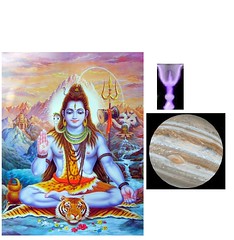
Vishnu
- His sleeps under a multi headed snake on a infinite milk ocean
- His weapon is chakra , with a beach shell that is used to make sound.
- His vehicle is eagle ( Garuda )
- He is Blue in Color
- He has 4 arms
- The ONLY Hindu God with lot of incarnations with strange shapes and hero of those mythical battles

Well, Velikovsky proposed Vishnu ( Venus ) born from Jupiter (siva)and it is captured into Solar System and rotated around solar systems disturbing the planets each fought with each other and discharging the electrical plasma discharges. which are shown as weapons like three pronged forks, wheels etc.
from worlds in collision
weapon: wheel - plasma discharge
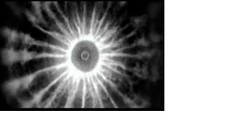
Snake heads
from worlds in collision
Blue color
Cow /milk/bull
from worlds in collision
incarnations
1. Though there are some minor variations in what these 10 incarnations are , many are common. Out of these are strangest are the one on the left in above picture.
_Dashavatara - Wikipedia
This makes sense, if Venus has made multiple rounds in solar systems kicking each planet on its way from different directions with different effects. Vishnu's later incarnations are place holders that extend even to today.
Though Buddha opposed Hindu religion, some people added Budda as one of the Vishnu’s incarnations. Vishnu’s incarnations are place holder for whatever one wants to add including the future ( Or current)avatar called Kalki who will come on a horse with knife to fulfill the famous verse from Gita.
“yada yada hi dharmasya glanibhabati bharata abhyuthhanam dharmsya tadatamnan?”
_ YadA YadA hi Dharmasya... - || Satyameva Jayate ||
ONLY other god or goddess that has incarnations exist is Kali. She had number of hands with various weapons and killing the demons and crushing them under feet and sits on Lion. Interestingly, wife’s of these hindu gods ( Vishun’s wife Lakshmi, shiva’s wife Parvathi, Brahma’s wife Saraswathi ) are more less play first lady type of roles. The only exception is Kali supposed to be incarnation of the Parvathi ( who is shiva’s wife ). Again Jupiter connection.
Suddenly, all this sounds like works of patriarchy that changed female goddess to male goddess.
Brahma
Except one festival celebrated in limited sections of india in his name and one or two rare temples, he doesn’t have much significance, though he is the creator, who runs to Vishnu for help for every little monster threat and his wife saraswathi is goddess of the education, still does not much importance except decorating the walls. He has
- Four heads
- Vehicle is swan
As per the legend, Vishnu created him and sent to earth to create veda’s and prepare his disciplines like Vysya ( who wrote Hindu myths Ramayan, Mahabharat and whole set of other derivatives ) to distribute. Interestingly he has very temples and disciples when compared with all other gods.
Well, Brahma sounds like more earthly than Cosmic, probably he don’t need special privileges.
Shiva’s off springs.
Ganesh : shiva's first son
- Elephant face
- Mouse as a vehicle despite having largest tummy in hindu gods.
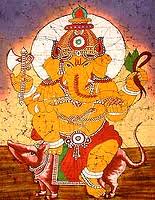
from worlds in collision
Kumara swamy : Another Shiva's son
- His Vehicle is peacock.
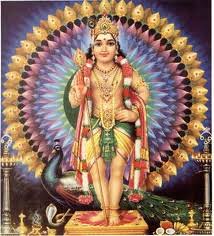
Why peacock ? – peacock feathers have blue at center again with green spreadings.?
From Worlds in Collission
If the cluster of comets entering solar system dragging massive comet like venus from the direction of Jupitor and if some comets stuck in the jupitor ‘s orbit atleast temporarily, one hitting the head , while he is discharging plasma ( trishul) , Other comets magnetic fields disturbing the Jupiter’s magnetic, it would have been a Cosmic dance.
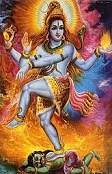
Viewing it would have been a extraordinary Trauma that locks up in subconscious ( collective amnesia). The unraveling of the subconscious trauma through meditation or equivalent techniques would have shown these gods for sure like in dreams.
Interestingly, Veda’s seems to have not given much importance to these above gods, Instead they preferred Wind, fire, sun etc.
_http://www.csuchico.edu/~cheinz/syllabi/asst001/fall97/chis-suc.htm.
I find these realizations interesting in view of recent readings. Remove the human shape and replace it to sphere, we get the truth.
My intention is to collect my observations .
In short, current day Hindu religion is based on 3 Primary Gods , Brahma (creator), Vishnu( protector), Shiva (destroyer) often called trinity.

What made me wondering is the strangeness of their physical characteristics of these Gods, their offspring, Incarnations, their out of context animal vehicles and strange weapons.
Shiva.
- ONLY Snake wearing on the neck
- ONLY god with Water flows out of the head
- ONLY Hindu god with third eye
- he puts the ash on his skin.
- Wears the tiger skin
- He is big in to dance(rudra) with dance and destroys the world with
- Cow is his vehicle
- His weapon is three pronged fork called Trishul.
- He is the ONLY primary god that has godly(not normal) offspring of 2 children
o Ganesh - elephant headed god with huge tummy and rides on little small mouse
o Kumara swamy – One with peacock as vehicle.
Do you see anything strange in this descriptions ?. I never questioned this strangeness , though I heard different interpretations of these characteristics as artistic representation with inner subtle meaning (changes from source to source).
Velikovsky proposes Shiva as planet Jupiter. Without going to the depth of the his references which is extensive, simple glance of the picture is sufficient to say how right he is.
With electrical Universe theory, suddenly all starts making sense of cosmic drama that happened. As we know Velikovsky theorized Venus came out of the Jupiter and C’s called that Venus is dragged in to solar system from cluster of comets and ancients have seen them coming from the direction of Jupiter and once can imagine the consequences.
Snake wearing – Some comet must have circled around the Jupiter at least temporarily at that time with their long black tails.
Third Eye – curiously, he is the ONLY hindu god that has 3rd eye- Is it the Great Red Spot ?. Of course I don’t when whether how long the red spot exist , but based on our current understanding , cosmic environment changes fast enough.
Tiger skin : bands of the Jupiter
Bull/Milk/Cow : velikovsky extensively wrote about this as a hydrocarbons from the tail of the Venus that precipitated and mutated and filled the land, flora and fauna with white substance. This is extensively interpreted as Bull, Cow , Milk and so on in every ancient culture in the world .

Vishnu
- His sleeps under a multi headed snake on a infinite milk ocean
- His weapon is chakra , with a beach shell that is used to make sound.
- His vehicle is eagle ( Garuda )
- He is Blue in Color
- He has 4 arms
- The ONLY Hindu God with lot of incarnations with strange shapes and hero of those mythical battles

Well, Velikovsky proposed Vishnu ( Venus ) born from Jupiter (siva)and it is captured into Solar System and rotated around solar systems disturbing the planets each fought with each other and discharging the electrical plasma discharges. which are shown as weapons like three pronged forks, wheels etc.
from worlds in collision
This description of the birth of the daughter from the mouth of the Creator is a Hindu parallel of Athene springing from the head of Zeus. Fragrance and nectar are mentioned in connection with the birth of the celestial cow, a combination that can be understood if we recall what we learned in the Sections ""Ambrosia"" and ""Birth of the Planet
Venus."""
IN EVERY COUNTRY of the ancient world we can trace cosmo-logical myths of the birth of the planet Venus. If we look for the god or goddess who represents the planet Venus, we must inquire which among the gods or goddesses did not exist from the beginning, but was born into the family. The mythologies of all peoples concern themselves with the birth only of Venus, not with that of Jupiter, Mars, or Saturn. Jupiter is described as heir to Saturn, but his birth is not a
mythological subject. Horus of the Egyptians and Vishnu, born of Shiva, of the Hindus, were such newborn deities. Horus battled in the sky with the monster-serpent Seth; so did Vishnu. In Greece the goddess who suddenly appeared in the sky was Pallas Athene. She sprang from the head of Zeus-Jupiter. In another legend she was the daughter of a monster, Pallas-Typhon, who attacked her and whom she battled and killed.
The slaying of the monster by a planet-god is the way in which the peoples perceived the convulsion of the pillar of smoke when the earth and the comet Venus disturbed each other in their orbits, and the head of the comet and its tail leaped against each other in violent electrical discharges."
weapon: wheel - plasma discharge

Snake heads
from worlds in collision
"The Egyptian Venus-Isis, the Babylonian Venus-Ishtar, the Greek Venus-Athene were goddesses pictured with serpents, and sometimes represented as dragons. ""Ishtar, the fearful dragon,"" wrote Assur-banipal. The Morning Star of the Toltecs, Quetzal-cohuatl (Quetzal-coatl), also is represented as a great
dragon or serpent: ""cohuatl"" in Nahuatl is ""serpent,"" and the name means ""a feathered serpent.""10 The Morning Star of the Indians of the Chichimec tribe in Mexico is called ""Serpent cloud,"" n a remarkable name because of its relation to the pillar of cloud and the clouds that covered the globe after the contact of the earth with Venus."
Blue color
As comets move close to the Sun, they develop tails of dust and ionized gas. Comets have two main tails, a dust tail and a plasma tail. The dust tail appears whitish-yellow because it is made up of tiny particles — about the size of particles of smoke — that reflect sunlight. Dust tails are typically between 1 and 10 million kilometers (about 600,000 to 6 million miles) long. The plasma tail is often blue because it contains carbon monoxide ions. Solar ultraviolet light breaks down the gas molecules, causing them to glow. Plasma tails can stretch tens of millions of kilometers into space. Rarely, they are as long as 150 million kilometers (almost 100 million miles). A third tail of sodium has been observed on Comet Hale-Bopp.
Cow /milk/bull
from worlds in collision
"A passage of the Ramayana about the ""celestial cow"" says: ""Honey she gave, and roasted grain . . . and curled milk, and soup in lakes with sugared milk," which is the Hindu version of ""rivers of milk and honey."" The ""celestial cow"" or ""the heavenly Surabhi"" (""the fragrant"") was the daughter of the Creator:
she ""sprung from his mouth""; at the same time nectar and ""excellent perfume"" were spread, according to the Indian epic.
incarnations
1. Though there are some minor variations in what these 10 incarnations are , many are common. Out of these are strangest are the one on the left in above picture.
_Dashavatara - Wikipedia
• Matsya, the fish, from the Satya Yuga. Lord Vishnu takes the form of a fish to save Manu from a flood, after which he takes his boat to the new world along with one of every species of plant and animal, gathered in a massive cyclone.
• Kurma, the tortoise, appeared in the Satya Yuga. When the devas and asuras were churning the ocean in order to get the nectar of immortality, the mount Mandara they were using as the churning staff started to sink and Lord Vishnu took the form of a tortoise to bear the weight of the mountain.
• Varaha, the boar, from the Satya Yuga. He appeared to defeat Hiranyaksha, a demon who had taken the Earth, or Prithvi, and carried it to the bottom of what is described as the cosmic ocean in the story. The battle between Varaha and Hiranyaksha is believed to have lasted for a thousand years, which the former finally won. Varaha carried the Earth out of the ocean between his tusks and restored it to its place in the universe.
• Narasimha, the half-man/half-lion appeared in the Satya Yuga. The raksha Hiranyakashipu was granted a powerful boon from Brahma, not allowing him to be killed by man or animal, inside or out, day or night, or in earth or the stars, with a weapon either living or inanimate. Vishnu descended as an anthropomorphic incarnation, with the body of a man and head and claws of a lion. He then disembowels the raksha at the courtyard threshold of his house, at dusk, with his claws, while he lay on his thighs.
• Vamana, the dwarf, appeared in the Treta Yuga. The fourth descendant of Hiranyakashyap, Bali, with devotion and penance was able to defeat Indra, the god of firmament. This humbled the other deities and extended his authority over the three worlds. The gods appealed to Vishnu for protection and he descended as the dwarf Vamana. During a yagna of the king, Vamana approached him in the midst of other Brahmins. Bali was happy to see the diminutive holy man, and promised whatever he asked. Vamana asked for three paces of land. Bali agreed, and the dwarf then changed his size to that of a giant. He stepped over heaven in his first stride, the netherworld with the second. Bali realized that Vamana was Vishnu incarnate. In deference, the king offered his head as the third place for Vamana to place his foot. The avatar did so and thus granted Bali immortality. Then in appreciation to Bali and his grandfather Prahlad, Vamana made him ruler of Pathala, the netherworld. Bali is believed to have ruled Kerala and Tulunadu. He is still worshiped there as the king of prosperity and recalled before the time of harvest. If these are the effects of comet venus rotations ( before it is settled ), based on the location, direction and impact to the viewer on the earth, all these stories had been telling the story..
This makes sense, if Venus has made multiple rounds in solar systems kicking each planet on its way from different directions with different effects. Vishnu's later incarnations are place holders that extend even to today.
Though Buddha opposed Hindu religion, some people added Budda as one of the Vishnu’s incarnations. Vishnu’s incarnations are place holder for whatever one wants to add including the future ( Or current)avatar called Kalki who will come on a horse with knife to fulfill the famous verse from Gita.
“yada yada hi dharmasya glanibhabati bharata abhyuthhanam dharmsya tadatamnan?”
_ YadA YadA hi Dharmasya... - || Satyameva Jayate ||
Whenever there is decline of Dharma (righteousness)..and rise of Adharma (unrighteousness); To protect the virtuous..to destroy the wicked and to re-establish Dharma, I manifest myself, through the ages.
ONLY other god or goddess that has incarnations exist is Kali. She had number of hands with various weapons and killing the demons and crushing them under feet and sits on Lion. Interestingly, wife’s of these hindu gods ( Vishun’s wife Lakshmi, shiva’s wife Parvathi, Brahma’s wife Saraswathi ) are more less play first lady type of roles. The only exception is Kali supposed to be incarnation of the Parvathi ( who is shiva’s wife ). Again Jupiter connection.
Suddenly, all this sounds like works of patriarchy that changed female goddess to male goddess.
Brahma
Except one festival celebrated in limited sections of india in his name and one or two rare temples, he doesn’t have much significance, though he is the creator, who runs to Vishnu for help for every little monster threat and his wife saraswathi is goddess of the education, still does not much importance except decorating the walls. He has
- Four heads
- Vehicle is swan
As per the legend, Vishnu created him and sent to earth to create veda’s and prepare his disciplines like Vysya ( who wrote Hindu myths Ramayan, Mahabharat and whole set of other derivatives ) to distribute. Interestingly he has very temples and disciples when compared with all other gods.
Well, Brahma sounds like more earthly than Cosmic, probably he don’t need special privileges.
Shiva’s off springs.
Ganesh : shiva's first son
- Elephant face
- Mouse as a vehicle despite having largest tummy in hindu gods.

from worlds in collision
"During his visit in Egypt, he heard from the Egyptian priests or guides to the antiquities that the army of Sennacherib, while threatening the borders of Egypt, was destroyed in a single night. According to this story, an image of a deity holding in his palm the figure of a mouse was erected in an Egyptian temple to commemorate the miraculous event. In explanation of the symbolic figure, Herodotus was told that myriads of mice descended upon the Assyrian camp and gnawed away the cords of their bows and other weapons; deprived of their arms, the troops fled in panic. Josephus Flavius repeated the version of Herodotus, and added that there is another version by the Chaldeo-Hellenistic historian Berosus. Josephus wrote introductory words to a quotation of Bero-sus, but the quotation itself is missing in the present text of the Jewish Antiquities
Herodotus recounts that he saw the statue of the god with a mouse in the palm of his hand, which was erected in memory of the event.
Two cities in Egypt claimed the same sacred animal, the shrew-mouse: Panopolis (Akhmim) in the south and Letopolis in the north. Herodotus did not travel to the south of Egypt; thus, he must have seen the statue in Letopolis. Even today many bronze mice, sometimes inscribed with the prayers of pilgrims, are found in the ground of Letopolis.
Both cities with the cult of the sacred mouse were ""sacred cities of thunderbolt and meteorites.""
* The Egyptian name for Letopolis is indicated by the same hieroglyphic as ""thunderbolt.""" "The ma'nidos came, but the thread had so cut into the flesh of the Sun's neck that they could not sever it. When all but one had given up, the Sun called to the Mouse to try to cut the string. The Mouse came up and gnawed at the string, but it was difficult work, because the string was hot and deeply imbedded in the Sun's neck. After working at the string a good while, however, the
Mouse succeeded in cutting it, when the Sun breathed again and the darkness disappeared. If the Mouse had not succeeded, the Sun would have died."""
Kumara swamy : Another Shiva's son
- His Vehicle is peacock.

Why peacock ? – peacock feathers have blue at center again with green spreadings.?
From Worlds in Collission
"The planet-god Shiva, Kalidasa says, ""deposited his seed in fire"" and gave birth to Kumara who battled the great demon named Taraka that ""troubled the world."" The Babylonian astrologers ascribed to their planet-gods the ability"
If the cluster of comets entering solar system dragging massive comet like venus from the direction of Jupitor and if some comets stuck in the jupitor ‘s orbit atleast temporarily, one hitting the head , while he is discharging plasma ( trishul) , Other comets magnetic fields disturbing the Jupiter’s magnetic, it would have been a Cosmic dance.

Viewing it would have been a extraordinary Trauma that locks up in subconscious ( collective amnesia). The unraveling of the subconscious trauma through meditation or equivalent techniques would have shown these gods for sure like in dreams.
Interestingly, Veda’s seems to have not given much importance to these above gods, Instead they preferred Wind, fire, sun etc.
_http://www.csuchico.edu/~cheinz/syllabi/asst001/fall97/chis-suc.htm.
Between 2000 B.C.E. and 1200 B.C.E. Aryan tribes from the region of Iran moved into the northern part of India. With these invading tribes came their deities. These Aryan gods became known in India as the Vedic Gods. These Vedic gods, like most ancient Aryan gods, are depicted in an anthropomorphic way. As stated by A. A. Macdonell in Vedic Mythology: "The true gods of Veda are glorified human beings, inspired with human motives passions, born like men, but are immortal"(pg. 2).
The Vedic gods also resemble other Aryan gods in their duties and actions. One example of this, is that Indra shares characteristics with Thor and other "hammer gods". As stated by Donald Mackenzie in Indian Myth and Legend: "Indra is the Indian Thor, the angry giant-killer, the god of war and conquest"(pg. xxxi).
These Vedic gods also resemble other Aryan gods in that they are overwhelming male, with female gods playing a minor role in the heavenly hierarchy. This was most likely because Aryan tribes practiced a patriarchal system instead of a matriarchal one. Thus with males being the dominant and more powerful figures in the society, and females having only a supporting role, so too did the gods.
The Vedic Gods are shown predominantly as being beneficent beings who bestow prosperity and good fortune upon their followers. When evil does befall, such as in the case of a draught and/or famine, it is not the work of the gods, but the work of demons. And when the gods defeat the demons, such as bringing on the rains, it only shows the beneficent of the gods even more.
They are also portrayed as moral entities, who punish the sinful and wicked while rewarding the pious and righteous. But more important than being seen as moral, is being seen as great and mightily. They are depicted as being able to do whatever they wish; having dominion over all creatures; not having their ordinances thwarted; and not having anything live beyond the time appointed by the gods (Macdonell, pg. 18).
The Vedic pantheon is considered to consist of thirty-three different gods, which are placed, in groups of eleven, into one of the three different categories: atmospheric, terrestrial, or celestial, each of which has its own area of responsibility. But just because a god is in one category does not mean that it is completely different from a god from another category; for sometimes a god from one category will have some of the same qualities of a god from another category.
To better explain this, a brief description of three different gods, each from a different category, follows. The gods being discussed, and their categories, are: 1) Indra, atmospheric; 2) Agni, terrestrial; and 3) Varuna, celestial.
I find these realizations interesting in view of recent readings. Remove the human shape and replace it to sphere, we get the truth.
Last edited by a moderator:


